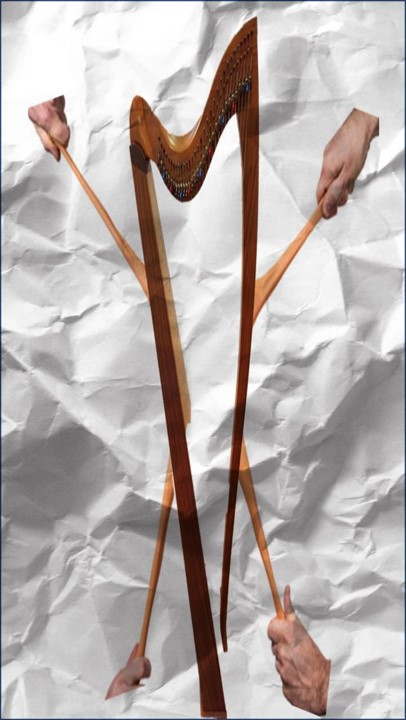We have talked about stretching through making art and stretching our bodies. There’s another place we need to stretch and that is in our music. And it’s the perfect time to think about it – it will be the winter holidays and all the lovely opportunities to play will be coming. I mention the holidays because they are the perfect foil for stretching our music.
The holidays are great from a repertoire perspective. There is a relatively small set of tunes to work from and each year, those that have been on our set lists for a while seem to become easier to prepare and to play. It’s also easier to knuckle under and practice – we know it’s coming; we know we’ll be playing; and we know the bulk of what we’ll bring to each performance.
That doesn’t exactly sound like stretching.
 And that’s why it’s so great! There are loads of holiday tunes – so you probably don’t know them all. But you know some and so each year you can add another one or two to fill in your set list. But we have to fight the urge to be lazy and just play all the same stuff.
And that’s why it’s so great! There are loads of holiday tunes – so you probably don’t know them all. But you know some and so each year you can add another one or two to fill in your set list. But we have to fight the urge to be lazy and just play all the same stuff.
I don’t know about you, but I really like hearing new (to me) stuff at the holidays. From countries whose music I don’t know well, from new sources, and from the set of those songs that hardly anyone records but are just so good.
So, the holidays are an opportunity to stretch ourselves – musically.
What does stretching musically mean? Trying new things! It can be adding techniques we don’t usually use, playing music we don’t usually play, finding stuff we didn’t know existed and fitting it into our lives, arranging music we like (from other instruments) and playing it on the harp, or more.
How is stretching musically good for us? Here are seven unsurprising ways (some of these might sound familiar since they are as with making art)
- Stretching is (still) the opposite of static! Static is not moving or changing. Static introduces b-o-r-i-n-g into your playing. It also means that you’re not growing as a musician. So, learn how to do some effect you think is cool…and actually use it in your playing! Do the work of technique practice. And after learning some new technique, actually add it to your playing!
- Stretching makes you more flexible. By adding new music, new sources, new techniques, new practice approaches, just new stuff to your playing, you will begin to explore yourself more and bring that into your playing and performance. And you will be free to do more than you thought you could when you were less flexible.
- Stretching helps defeat stress. The more you stretch your music, the more comfortable you become with playing it – because you’ll become more accustomed to being stretched. In your practice, in performance, in ensemble, in sessions – no matter where you’re playing you will be more relaxed, able to enjoy the process and product of making music. That comfort is an indication of your reduced stress.
- Stretching helps overcome pain and discomfort. You might decide to stretch your music when you feel the discomfort be becoming bored. Of course, once you decide to stretch your music, you might feel self-conscious, uneducated, or ignorant. The music activities that stretch you might make you feel uncomfortable in and of themselves. But keeping at it – a little bit each day – will help you be more comfortable and soon, you’ll be interested in the flexibility of trying new music. I’d suggest adding time for creativity in your practice each day so you will be able to stretch musically with less (perceived) “stiffness”.
- Stretching helps you focus. You can be mindful when you are stretching your music. Mindful of what it is about the music that attracts (or repels) you, what technique elements you need to work on, what your harp really shines with. In addition, a broader repertoire may help you to feel more accomplished and allow you to comfortably book gigs previously out of reach. Be sure to pay attention as you’re stretching your music to identify what to keep on doing.
- Stretching improves your range. As you add music to your toolbox, and include the listening, reading, technique and effects the new music might require of you, you will become more able to do more things with greater musicality – and add new things more quickly.
- Stretching stretches you. There’s nothing like playing something you never thought you’d be able to (or possibly even that you never thought about adding) to boost your confidence and encourage you to try even more new things!
Stretching – the gentle kind that broadens your abilities, and leaves you relaxed and enjoying making music, is just what you need. With these seven stretches you might become a better musician! What kind of music might you add to stretch yourself? What else might you do to stretch yourself musically? Tell me in the comments – I can’t wait to hear!

Just started a new Holiday tune today and have been working on a new one to play and sing…. I am s-t-r-e-t-c-h-i-n-g!!!!!!
Good on you! Keep at it 😊